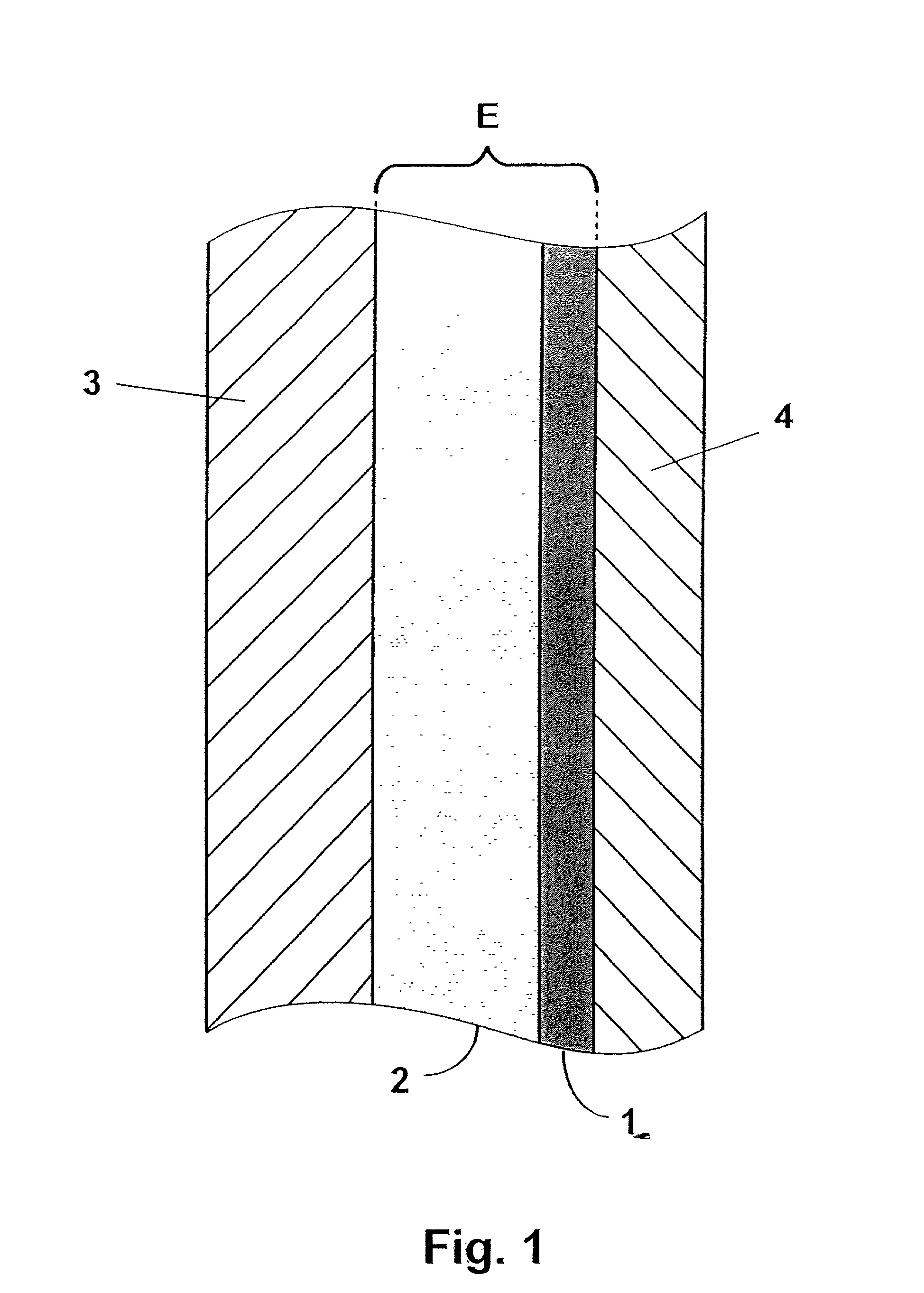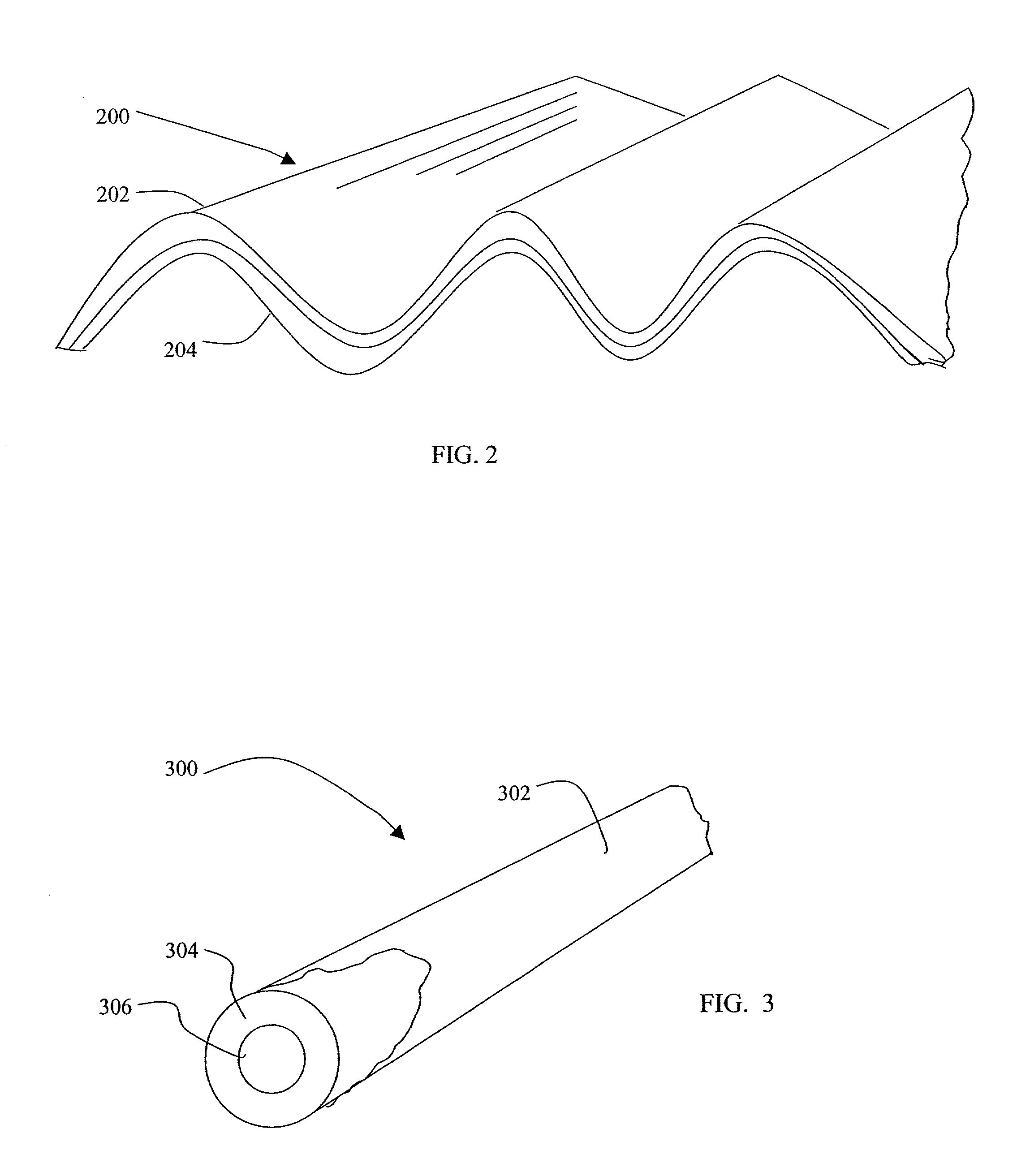Thin film composite electrolytes, sodium-sulfur cells including same, processes of making same, and vehicles including same
a composite electrolyte and film technology, applied in the direction of non-aqueous electrolyte cells, electrochemical generators, coatings, etc., can solve the problems of unsupported electrolyte tubes, cell made by conventional methods, and electrolyte made from materials such as .beta, and can typically not be optimized for high conductivity
- Summary
- Abstract
- Description
- Claims
- Application Information
AI Technical Summary
Problems solved by technology
Method used
Image
Examples
Embodiment Construction
[0044] The present invention encompasses thin-film composite electrolyte structures such as illustrated in FIG. 1, which are primarily suitable for use in an electrochemical cell, particularly those that operate are relatively high temperatures. The most preferred electrochemical cell is a sodium-sulfur cell wherein liquid sodium is the anodic reactant and a mixed sulfur / sodium polysulfide is the cathodic reactant. Referring now to FIG. 1, one preferred electrochemical cell is illustrated which is comprised of a cathode 3 comprised of a cathodic reactant; an anode 4 which is comprised of an anodic reactant; and a thin-film composite electrolyte structure E which is comprised of a first component layer 1 and a second component layer 2. As previously mentioned, the preferred anodic reactant comprises liquid sodium and the preferred cathodic material comprises a mixed sulfur / sodium polysulfide material.
[0045] In one preferred thin-film electrolyte embodiment, first component layer 1 is...
PUM
| Property | Measurement | Unit |
|---|---|---|
| pore size | aaaaa | aaaaa |
| thickness | aaaaa | aaaaa |
| thickness | aaaaa | aaaaa |
Abstract
Description
Claims
Application Information
 Login to View More
Login to View More - R&D
- Intellectual Property
- Life Sciences
- Materials
- Tech Scout
- Unparalleled Data Quality
- Higher Quality Content
- 60% Fewer Hallucinations
Browse by: Latest US Patents, China's latest patents, Technical Efficacy Thesaurus, Application Domain, Technology Topic, Popular Technical Reports.
© 2025 PatSnap. All rights reserved.Legal|Privacy policy|Modern Slavery Act Transparency Statement|Sitemap|About US| Contact US: help@patsnap.com



